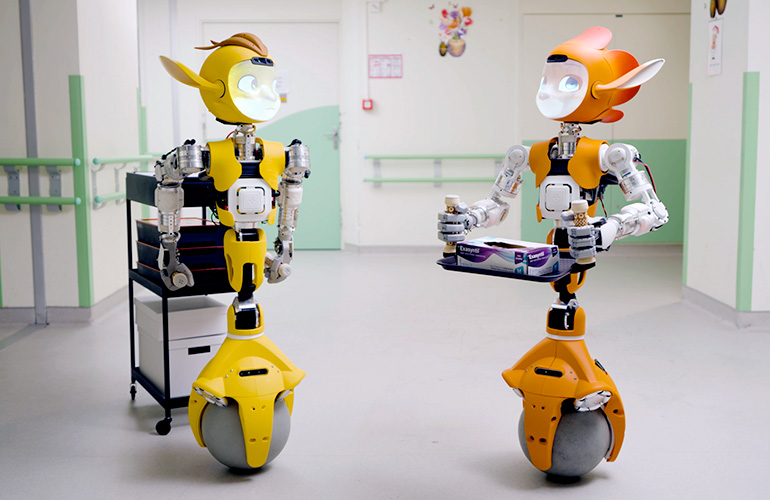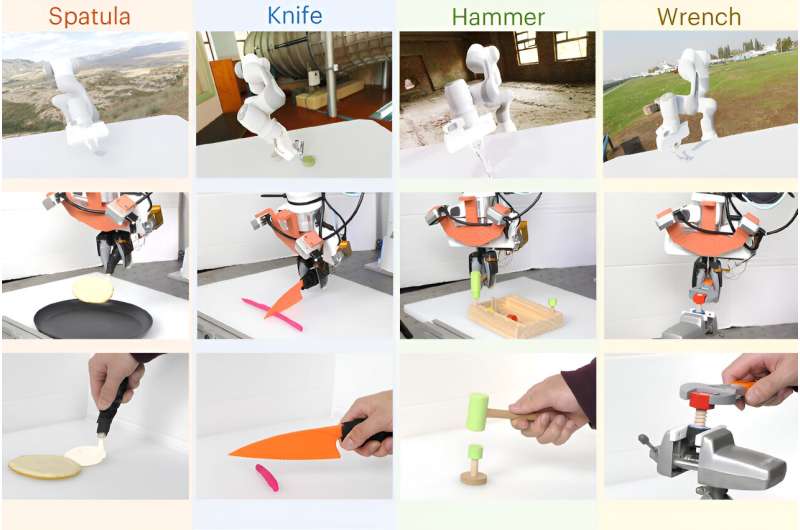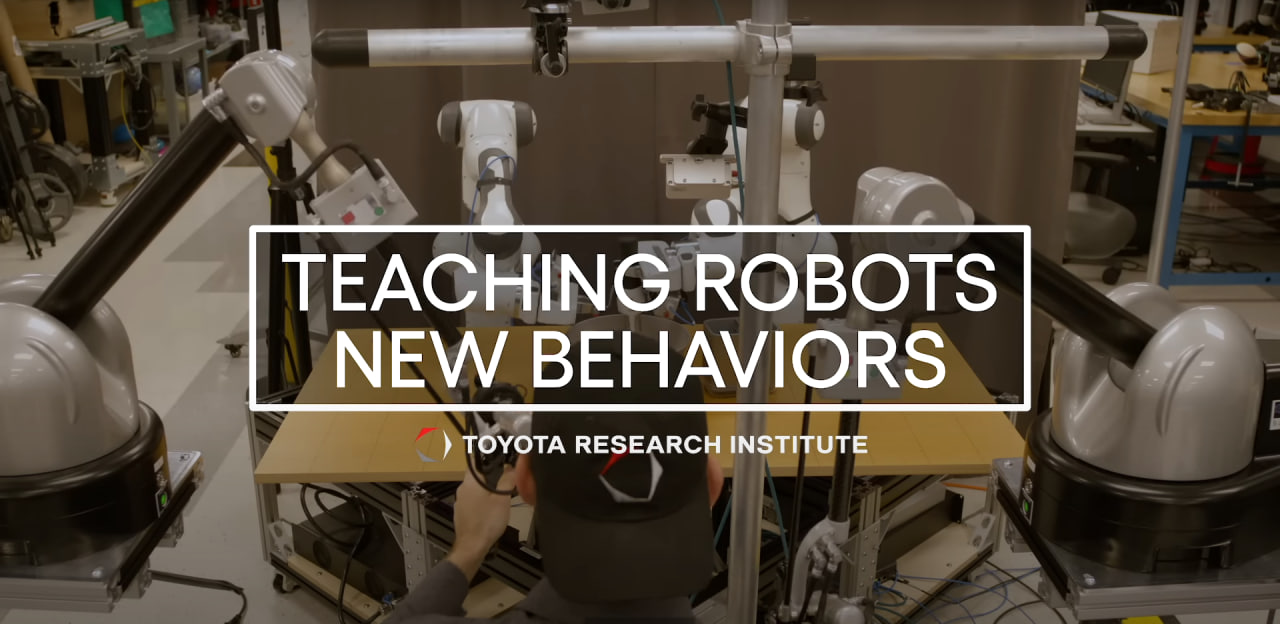In a groundbreaking development that could revolutionize the field of robotics, German industrial giant KUKA is making significant strides in developing an artificial intelligence (AI) chatbot capable of converting simple voice commands into executable software code for robots. This innovation promises to bridge the gap between human intuition and complex robotic programming, potentially transforming how we interact with and control industrial machines.
The Power of Voice: From Commands to Code
KUKA's press release showcased the potential of this technology with a compelling example. A simple voice command like "take the components one at a time and place them on a table in the shape of the letter U" could be transformed into a fully executable code sequence. This leap from natural language to machine instructions represents a significant advancement in human-robot interaction.
Roland Ritter, head of the platform modeling program at KUKA, emphasized the transformative nature of this technology: "To a large extent, programming a robot to perform a particular task is still the domain of experts. That's why we're working on an AI chatbot that translates a simple voice command into program code."
Riding the Wave of AI Innovation
The development of this AI chatbot comes at a time when artificial intelligence, particularly generative AI, has captured global attention. The launch of ChatGPT brought AI into the mainstream consciousness, sparking discussions about its potential applications across various sectors. The industrial sector, not to be left behind, is actively exploring how these AI advancements can be harnessed to improve efficiency and accessibility in manufacturing and robotics.
KUKA's initiative represents a concrete step towards integrating cutting-edge AI technology into the industrial robotics landscape. By leveraging the power of natural language processing and code generation, KUKA aims to make robot programming more intuitive and accessible to a broader range of users.
Safety First: Navigating the Challenges of AI Implementation
While the potential of this technology is immense, KUKA is proceeding with caution. Ritter noted, "We could transfer the generated AI code to the robot controller, but right now it's still too unsafe. The whole industry agrees with this." This cautious approach underscores the critical importance of safety in industrial robotics, where errors could have serious consequences.
To address these safety concerns, KUKA is currently testing the AI-generated code in a simulated environment. The company uses a digital robot double to check the generated AI program for errors before considering any real-world implementation. This virtual testing ground allows for thorough validation of the AI's outputs without risking physical hardware or human safety.
Building on a Legacy: KUKA Robot Language (KRL)
KUKA's approach to training its AI chatbot is rooted in the company's rich history of robotics innovation. The AI model is being trained on data from KUKA's proprietary programming language, KUKA Robot Language (KRL), which has been in use for several decades. This foundation in a well-established, industry-specific language provides a solid base for the AI to understand and generate relevant code.
The next phase of development will involve direct interaction between the chatbot and customers. This step is crucial for fine-tuning the AI's understanding of natural language commands in real-world scenarios. By learning how customers actually phrase their instructions, the AI can be optimized for more accurate and intuitive interactions.
The Art and Science of AI Training
Interestingly, KUKA's research has revealed some counterintuitive insights into AI training. Ritter pointed out, "It's interesting to note that AI models don't necessarily get better with more training. It is important to find the right balance here so that the training data remains at a high level of quality."
This observation highlights the nuanced nature of AI development. While it might seem logical that more data would always lead to better performance, the reality is more complex. The quality and relevance of the training data, as well as the way it's structured and presented to the AI, can be just as important as quantity. KUKA's approach of carefully curating its training data from its established KRL codebase demonstrates an understanding of this principle.
Implications for the Future of Robotics
The development of this AI chatbot by KUKA has far-reaching implications for the robotics industry:
- Democratization of Robot Programming: By simplifying the programming process, this technology could make robotics more accessible to smaller businesses and non-expert users.
- Increased Flexibility: Robots could be reprogrammed more quickly and easily, allowing for more agile manufacturing processes.
- Improved Human-Robot Collaboration: Natural language interaction could lead to more intuitive and seamless cooperation between humans and robots in the workplace.
- Educational Opportunities: This technology could be used as a learning tool, helping novices understand the principles of robot programming through natural language interactions.
- Potential for Innovation: As the barrier to programming robots lowers, we might see an explosion of new and creative applications for robotics across various industries.
Challenges and Future Directions
While KUKA's AI chatbot represents a significant step forward, several challenges remain before this technology can be widely implemented:
- Safety and Reliability: Ensuring that AI-generated code is consistently safe and error-free is paramount.
- Handling Complexity: While simple commands are a good starting point, real-world industrial tasks often involve complex sequences and conditions.
- Integration with Existing Systems: The AI will need to work seamlessly with current robotic control systems and safety protocols.
- Regulatory Compliance: As this technology develops, it will need to meet industry standards and regulations for robotic systems.
A Glimpse into the Future of Human-Robot Interaction
KUKA's development of an AI chatbot capable of translating voice commands into robot code represents a significant milestone in the evolution of industrial robotics. By combining the intuitive nature of human language with the precision of machine code, KUKA is paving the way for a future where controlling complex robotic systems could be as simple as having a conversation.
While there are still hurdles to overcome before this technology can be widely implemented in real-world settings, the potential benefits are enormous. As KUKA continues to refine and validate this system, we may be witnessing the early stages of a paradigm shift in how humans interact with and control robotic systems.
The journey from voice command to robot action is complex, involving natural language processing, context understanding, code generation, and rigorous safety checks. KUKA's cautious yet innovative approach to this challenge showcases the company's commitment to pushing the boundaries of what's possible in robotics while maintaining the highest standards of safety and reliability.
As this technology continues to evolve, it will be fascinating to see how it shapes the future of manufacturing, logistics, and other industries reliant on robotic systems. The day when programming a complex industrial robot is as simple as telling it what you want it to do may be closer than we think, thanks to pioneering efforts like KUKA's AI chatbot.


















